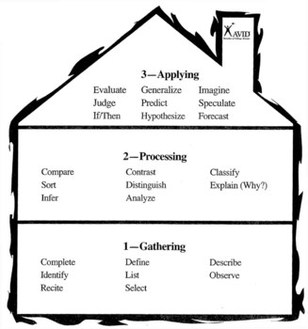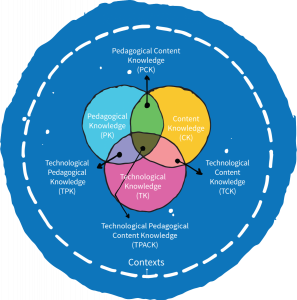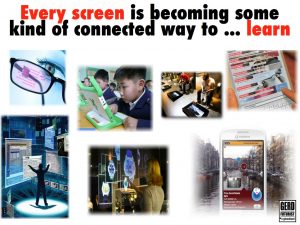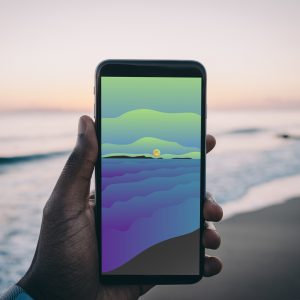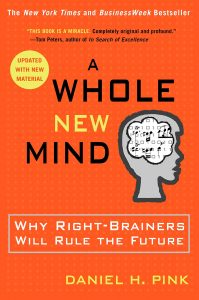For the past several weeks I have been questioning how impactful and relevant educational research is. Two questions have come to the forefront for me: Who is reading the research? Who is conducting the research? I am troubled by the fact that as I spend more and more time looking into the research it becomes apparent that it often does not reflect the complexities and realities of the classroom. Is this because it is not written by the classroom teacher? Or is it because it is not intended to inform the classroom teacher?
I am confident that the trademark of a great teacher is their emotional and relational competencies rather than the tools, strategies, or even the content. So, when researchers talk about the effectiveness of using technology, whether it is for assessment, formal or informal learning, or collaboration I believe it is impossible to separate the tool from the educator that utilizes it. Teachers should be more involved in the research as they recognize how vital trust and relationships are to the learning process. Teachers should also have more access to the research, which I believe would help direct research to be more relevant and applicable in the K-12 setting. Currently, research is not widely read by the classroom teacher unless they are doing graduate studies. Research seems to be aimed at University academics and policy-makers, but this is not where the largest gains will be realized. The full potential and influence of research will be realized when the educator in the K-12 classroom has access to the research and views the research as relevant and applicable. It is with these three things in mind (accessibility, relevance, and application) that I reviewed the research presented by my peers in EDCI 570/571.
Access: Research needs to be available to everyone.
Cheryl, Heather and Benjamin mention several times in their summary of “Using Information Technology for Assessment: Issues and Opportunities” (pp 577-648) that
developments need to be shared through Open Educational Resources so that progress can be made more quickly in this emerging field.
Joanna, Nicole and Hayley’s summary of “Issues and Challenges Related to Digital Equity” (pp 981-1098) points out that open educational resources have led to an increase in equity in learning. I propose that access to research also needs to be ‘open’ so that there is equity between the educator and the researcher.
Jerry and Rhyanon’s summary of “Flexible, Open and Distance Learning in the Twenty First Century” (681-776) identifies that one of the key aspects in a successful blended learning program is Professional Development through workshops and hands on experience. This would seem like a perfect opportunity to encourage educators to access relevant research, however the divide between practicing teachers and research is once again strengthened by this omission.
Relevant: K-12 teachers need to be more involved in research to make it more relevant.
Faune, Leanne and Rochelle’s summary on the research of “Curricular Challenges of the Twenty-First Century” (pp 3-120) appears to be very relevant for current educators. Points such as “young learners lack the ability to critically evaluate the information found on digital medias” and there needs to be improvement in “teacher skills and competencies to educate students on digital literacies” are obstacles that need to be addressed and overcome before technology can be used effectively. It is noted in their summary that the authors, Voogt and Erstad,
discuss the mismatch between research on how people learn and how schools are organized, the lack of professional development, the overcrowding of the curriculum, access to and availability of technologies, the differing agendas of stake holders, lack of teacher skill
These acknowledgements add relevance to their research as these challenges also need to be recognized and tackled in order to effectively implement technology. A quick google search reveals that Voogt has 194 research items and 3828 citations. I would like to read more articles by Voogt as her research appears to be quite relevant which leads me to be optimistic that it is also applicable.
The summary presented by Dierdre, Gary and Andrew on “Advanced Principles in Multimedia Learning” (pp 371-390) was challenging for me to appreciate (not the presentation itself, but the material). I quickly dismissed the relevance of the research as it was clearly directed towards the academic and not to the practicing teacher. Many of the areas suggested for further research regarding the implementation of guided discover learning in multimedia learning was predictable and obvious for the experienced teacher. Given that I struggled to find the relevance in the research, it might also be expected that I struggled to identify how to apply the research (although the intellectual in me certainly enjoyed the detailed organization of ideas and principles).
The topic of flexible, open, and distance learning covered by Jerry and Rhyanon is very relevant in today’s educational landscape. In their summary I recognized that the models presented resembled the TPAC and SAMR models. It appears that the models are helpful for policy makers and administrators of on-line or blended learning institutions, and that the models are valuable for evaluating the effectiveness of a blended learning experience. As noted by Jerry and Rhyanon:
As a teacher reading this information, I am encouraged that our school providing Blended learning classes supports the flexibility of pedagogy, environment, learner, and teacher role. The area that can be developed further is the flexibility of content and technology to further personalize the learning experience for our students.
Joanna, Nicole and Hayley note in their summary of “Issues and Challenges Related to Digital Equity” that technology provides options for those with learning difficulties, and that digital technology can actually promote cultural diversity. Both of these findings are very relevant to educators, and also very applicable as several assistive tools were suggested. I appreciate that shortcomings of technology were also noted in their summary, thereby increasing the relevance of the research for educators.
Applicable: K-12 teachers need to be involved in the development of technology and the construction of educational models.
Cheryl, Heather and Benjamin note in their summary of “Information Technology for Assessment” that
teachers and students need to be included (and see themselves) as co-creators in shaping and directing the development of new tools for assessment.
In particular, Cheryl points out that “there is a whole other career out there in the designing of interactive software for assessment and teaching based soundly on cognitive principles and theory-based domain models”. The difficulty here lies in not removing the developer from the educational practice so that the technology responds to the demands and challenges experienced in the classroom.
Jerry and Rhyanon’s summary of “Flexible, Open and Distance Learning in the Twenty First Century” (681-776) notes that there is limited research on designing and implementing blended learning at elementary and secondary school levels. I believe it is important that the research be conducted by elementary and secondary teachers so that the findings will be relevant and applicable to these unique age groups.
The summary provided by Sean, Jeremy and Clay on “Basic Principles of Multimedia Learning” (pp 149-368) has left me questioning the application of their research. Clay mentions that the results of the research depended on many variables so the outcomes were somewhat unpredictable. Herein lies my assertion that the research often lacks relevance in the context of the classroom and the experienced educator might be more effective relying on their expertise rather than strictly relying on the research.
This past few weeks have given me an opportunity to question the purpose and audience of educational research, identify what it is that I value and look for in research, and consider how I want to design and implement my research in the future. Above all else, I hope that my research will be relevant and applicable for current educators, and also that it will challenge and inspire educators to try new things in order to further develop their expertise.
